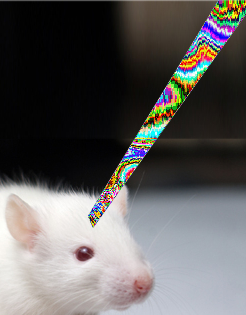Killer mice under laser control
 Using lasers and modified brain cells, researchers have isolated the circuitry behind predatory behaviour.
Using lasers and modified brain cells, researchers have isolated the circuitry behind predatory behaviour.
Yale University researchers engineered specific neurons in mice to fire upon light stimulation, isolating and selectively activating sets of neurons.
They did this to one set of neurons in the amygdala, the brain's centre of emotion and motivation, and found that it cues the animal to pursue prey. Another set was shown to signal the animal to use its jaw and neck muscles to bite and kill.
When the laser is off, the animals behave normally, but when it is turned on the mice begin pursuing and biting almost anything in their path, including bottle caps and wood sticks.
“We'd turn the laser on and they'd jump on an object, hold it with their paws and intensively bite it as if they were trying to capture and kill it,” says lead investigator Dr Ivan de Araujo.
But, he said, there is more to the killer instinct than just an on/off switch.
Predatory hunting takes the form of highly complex behaviours that are common to most jawed vertebrates, including humans.
“It is a major evolutionarily player in shaping the brain,” says de Araujo.
“There must be some primordial subcortical pathway that connects sensory input to the movement of the jaw and the biting.
“The system is not just generalised aggression.
“It seems to be related to the animal's interest in obtaining food,” he said.
The animals did not appear interested in attacking other mice in the cage, while hungry mice were found to more aggressively pursue prey during light stimulation than mice that were not hungry.
The researchers also specifically lesioned each type of neuron.
They found that, if they lesioned the neurons associated with biting and killing, the animals would pursue the prey but could not kill. The biting force of the jaw was decreased by 50 per cent.
“They fail to deliver the killing bite,” says de Araujo.







 Print
Print